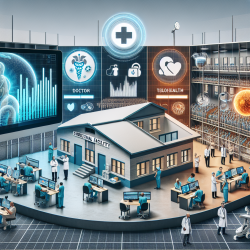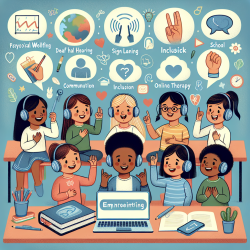Unlocking the Secrets: What Correctional Facilities Can Teach Us About Effective Public Health Strategies
The COVID-19 pandemic has been a catalyst for change across various sectors, including correctional and detention facilities. These environments, often characterized by dense populations and limited resources, faced unique challenges during the pandemic. However, they also emerged as unexpected centers of innovation and collaboration, offering valuable lessons for public health practitioners. This blog explores the insights gained from the COVID-19 response in correctional settings and how these lessons can be applied to enhance public health strategies, particularly in educational settings like schools.
Key Lessons from Correctional Facilities
The research article titled "Lessons Learned from COVID-19 Response in Correctional and Detention Facilities" highlights several critical insights:
- Enhanced Partnerships: The pandemic necessitated unprecedented collaboration between public health agencies and correctional facilities. These partnerships were crucial in managing outbreaks and ensuring the health and safety of both staff and incarcerated individuals.
- Innovation and Flexibility: Facilities implemented innovative solutions, such as telehealth services and virtual visitation, to maintain healthcare and social connections amidst restrictions. These innovations have potential applications beyond the pandemic.
- Data-Driven Decisions: Real-time data and corrections-specific public health guidance were vital in managing the pandemic. Facilities that leveraged data effectively were better equipped to respond to emerging challenges.
- Mental Health Focus: The mental health impact of the pandemic was significant, highlighting the need for ongoing support and wellness initiatives for both staff and incarcerated individuals.
Applying These Lessons to Educational Settings
While the context of correctional facilities is unique, the lessons learned can be applied to other sectors, including education. Schools, like correctional facilities, are community environments where health and safety are paramount. Here’s how educators and administrators can benefit from these insights:
- Building Strong Partnerships: Collaborate with local health departments and community organizations to develop comprehensive health and safety plans. These partnerships can provide valuable resources and support during public health emergencies.
- Embracing Innovation: Implement telehealth services and virtual learning platforms to ensure continuity of education and support services. These tools can also enhance access to specialized resources and programs.
- Leveraging Data: Utilize data to inform decision-making and tailor interventions to the specific needs of the school community. Real-time data can help identify trends and address issues proactively.
- Prioritizing Mental Health: Develop mental health initiatives that support students, staff, and families. Providing access to counseling services and promoting wellness can mitigate the long-term impact of public health crises.
Encouraging Further Research
The insights gained from correctional facilities underscore the importance of ongoing research and evaluation. Public health practitioners and educators are encouraged to explore further studies and collaborate with diverse sectors to enhance their understanding of effective strategies. By fostering a culture of continuous learning and adaptation, we can build resilient systems that prioritize health and well-being.
To read the original research paper, please follow this link: Lessons Learned from COVID-19 Response in Correctional and Detention Facilities.










